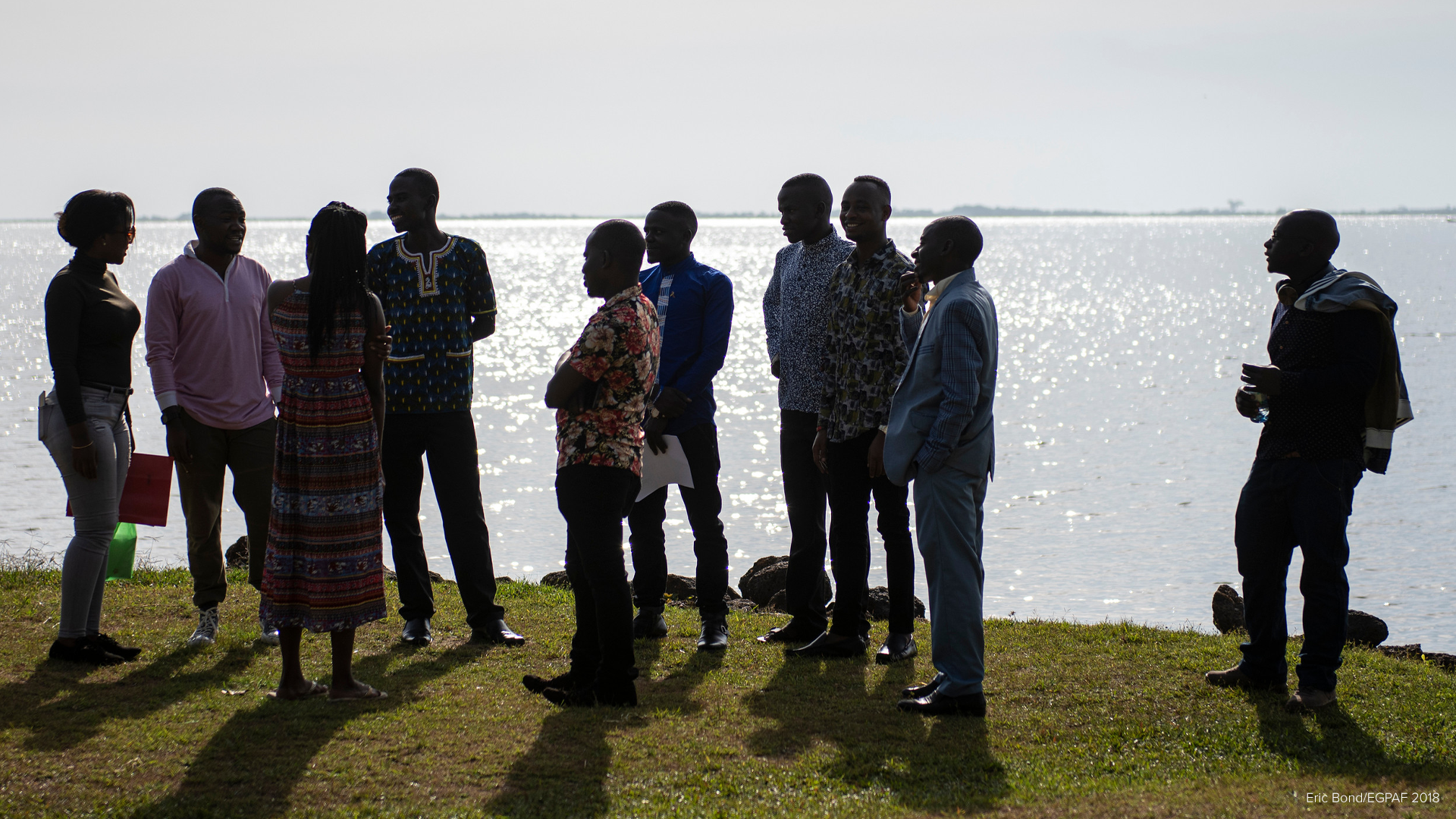 Along the southern shores of Lake Victoria, west of Kenya’s capital city, Nairobi, a middle-aged man walks into a facility – it has become his routine.
Along the southern shores of Lake Victoria, west of Kenya’s capital city, Nairobi, a middle-aged man walks into a facility – it has become his routine.
His mission is to not only treat TB, the disease that once threatened his life, but also to protect his three grandchildren who are all below five years of age.
Since December 2019, 59-year-old James Omollo has made 11 two-hour roundtrip visits from his home in Rusinga island to Mbita Sub-County Hospital in Homa Bay. By the time he completes treatment, James will have spent Kshs 8,400 (US$ 84) on the 32 boda boda rides to and from the facility. During his first intensive phase of treatment, he visited the facility every week for two months, then every two weeks for four months. Until he finishes his medication in May, clinicians at the facility monitor James closely to confirm he is taking medicine as required, while also checking for any adverse effects.
James now joins the 58 million people that TB treatment saved between 2000 and 2018.
“When I was first diagnosed with TB in December 2019, I was very ill and famished,” James reveals, “I was coughing night and day and did not have an appetite.”
James lives with his grandchildren, and knowing he had TB made him fearful of infecting them. “I did not want my grandchildren to go through what I went through,” James says. When he learned he could protect his at-risk grandchildren, James did not hesitate to bring them to the facility.
His mission is to not only treat TB, the disease that once threatened his life, but also to protect his three grandchildren who are all below five years of age.
The Kenya 2019 to 2023 TB strategic plan estimates that 10 to 15 percent of all TB cases notified to the Ministry of Health should be among children. In Kenya, diagnosis for children is sub-optimal, with children representing only 9.7 percent according to the 2019 National TB report. Children are usually infected with TB by a household contact with active TB, and the risk is even higher when that household member has infectious TB, like James.
With a lack of access to the most effective tests, children often become very ill before they are diagnosed with TB and put on treatment.
Thanks to the Elizabeth Glaser Pediatric AIDS Foundation (EGPAF) Catalyzing Pediatric TB Innovations (CaP TB) project, things are changing for better in Kenya’s Homa Bay and Turkana counties. This Unitaid-funded project (2017-2021), managed and implemented by EGPAF in 10 countries including Kenya, aims to reduce pediatric TB morbidity and mortality by developing, implementing, and documenting innovative models of care and catalyzing their wide-scale uptake to improve case detection and treatment. CaP TB is implemented in partnership with the county governments and the National TB Program.
Mbita Sub-County Hospital, is one of the 18 CaP-TB facilities in Homa Bay Couny. Lessons learned in these sites will be replicated in more than 150 facilities. In addition to the intensified efforts to diagnose and successfully treat children with active TB, implementing facilities have also strengthened the use of TB contact management registers to line-list all household contacts, protecting children exposed to infectious TB by a household member from getting TB disease.
“Whenever we find an adult with bacteriologically confirmed infectious TB, we do household contact screening to identify exposed children and protect them from developing TB disease,” says William Ochieng, a Clinical Officer for TB and HIV at Mbita sub-county hospital.
Typically, children exposed to infectious TB disease are put on isoniazid preventive therapy (IPT), a long six-month TB preventive treatment (TPT). However, James’ grandchildren did not have to take their TPT drugs for six months. Mbita hospital, alongside three other high-volume sites, is piloting the new Rifampicin and Isoniazid fixed-dose combination TPT, a three-month, dispersible, child-friendly, and more effective treatment than IPT. Determined to protect his grandchildren, James coincided his TB treatment with his grandchildren’s TPT.
“With the six-month regimen, a few [clients] fell out of the system without completing treatment, despite heightened follow-up. So far, there have not been any dropouts with the shorter regimen,” affirms Felix Mboya, CaP TB project manager in Kenya.
So far, there have not been any dropouts with the shorter regimen. Felix Mboya, CaP TB Project Manager
James’ grandchildren are among the nine children who have completed the new shorter TPT regimen and all are thriving. Under CaP TB, EGPAF has put more than 150 children on treatment. EGPAF has placed 375 children under the age of five years old on all forms of TPT, from 848 index cases of confirmed TB.
“We’re confident that more children will be identified following the launch of the new guidelines, which target children under the age 15, and not just those under 5 only,” says Dr. Eliud Mwangi, EGPAF’s country director in Kenya says.
As we mark World TB Day in 2020, it is time we stopped new TB infections in children. We must be proactive and identify at-risk children, ensuring they have access to life-saving preventive treatment.
With funding from the U.S. President’s Emergency Plan for AIDS Relief (PEPFAR), and support through the U.S. Centers for Disease Control and Prevention (CDC), EGPAF also supports the Homa Bay county government’s aim to achieve HIV epidemic control.






